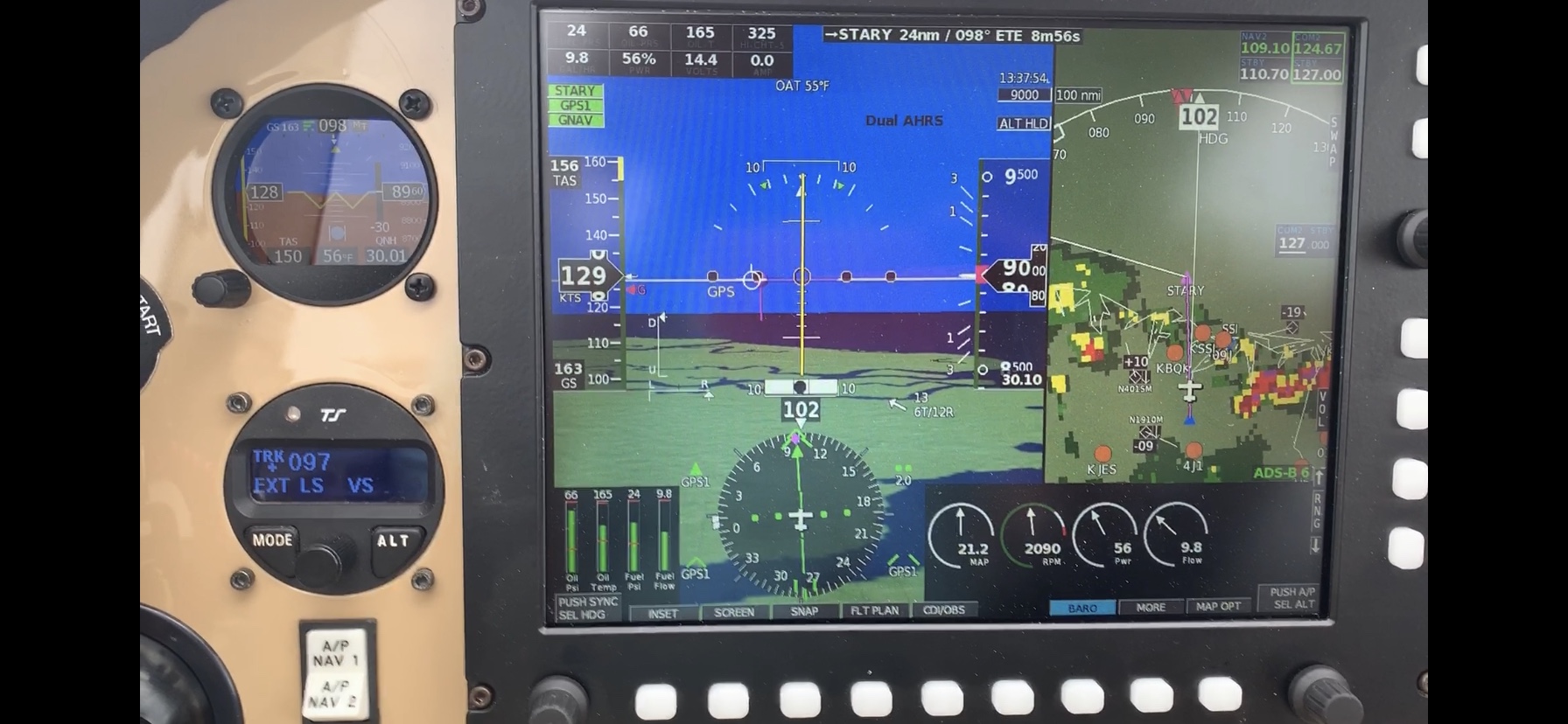Why do we desire fly at lower RpM full rental power when physics tells us that higher RPM gets more molecules moving?
What makes you go is not only how many molecules you move, but also how hard you throw 'em backwards.
Not everyone likes to go slow....
Being nice to your engine doesn't mean "slow". Flogging it at 75 vs a more normal cruise at 65 is theoretically a hair under a 5% difference in cruise speed.
In the real world, I can be nice to my Mooney's engine and get 175 KTAS on 12 gph, or I can beat it up and get 185 KTAS on 17 gph. That means I get 34% more miles per dollar than the guy who pushes it, while only going 5% slower... And that completely ignores the fact that on a $50,000 engine, beating it up is foolish and will cost you way more than the difference in fuel.
An oversimplification, but think of the gears on a bicycle and how you use them to maximize your torque, power, and rpm (pedal revolutions) needs for given terrain. High manifold pressure with low RPMs is like having your bike in a high gear, with low pedal crank RPMs, requiring you to REALLY horse on the pedals, quickly wearing yourself out especially if you're going uphill or trying to accelerate. You use gears on a bike to try and maintain your pedal cadence, say 70 rpms, so that you get the maximum endurance out of yourself and the most out of your efforts. Downhill? Higher gear ratio yielding more speed per pedal crank revolution, but still staying in your cadence comfort zone, with the same overall amount of effort given by the rider.
High manifold pressure with low RPMs is the equivalevent of asking your engine to drive up a steep hill in high gear. Yes, you can "coast" like that, but why? If a particularly muscular bicyclist can ride uphill in a high gear, does that mean he should? When you (or your engine) is really pumping, you (and your engine) are happiest when you're getting more RPMs for your work, and it's less stress on the whole drive chain.
I think...
But if you think of your bike, we're pretty much talking the difference between two adjacent gears here. For cruise, my entire range of options for RPM is 2300 through 2500, not even a 10% difference, so while the higher gear will have you pushing harder, it's not anywhere near the difference you're thinking about.
Plus, the engine at lower RPM, while it does have more work to do in terms of the combustion and mechanical aspects of turning that into torque and then thrust, it has LESS work to do to pump air into the intake and overcome friction in the engine. It's still 65% (or whatever).
I’m in the go fast at high rpm camp. 22”, 2450. Maybe I’ll regret it. But that’s also the smoothest RPM.
May I suggest a dynamic prop balance. One of the most underutilized maintenance procedures in GA! It'll not only help your engine run smoother, that smoother running will keep all the other parts on your plane from getting shaken apart.
Do we care what the prop's most efficient rpm is? Are these published anywhere?
I've never seen it, but I sure wish they were! All I know is that when the prop tips near the speed of sound, you lose a helluva lot of efficiency - You're making the power into noise instead of thrust at that point.
So what takes our engines out of service sooner rather than later? Cylinder wear? What’s the root cause of that wear, is it cycles or pressure? It’s both, but which plays the greater role? I and most others on this forum probably don’t know. We can hypothesize and discuss, but don’t have data.
Deakin, Braly et al *do* have data, and recommend the lower RPM.
In the mean time we can look to old guys who have TCM engines that have not been topped.
Hey, who are you callin' old?

Yes, I run my airplane at 65%, lean of peak, high RPM, low MP (generally WOT). Everyone has been telling me forever that there's no way I'll ever make TBO on my Conti IO-550.
They were right - My partner was flying the plane when it hit TBO. All of my flying is merely getting it farther and farther above TBO.


